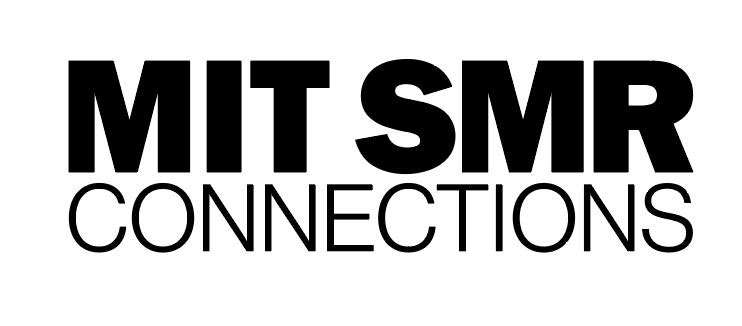At the beginning of the pandemic, few realized how dramatically it would affect the way we work. At first, it seemed that working from home might just be temporary—and that after a few weeks, people would return to the office. But as the months dragged on and the pandemic lingered, it became obvious that we were in it for the long haul. Companies were challenged to rethink their business models and reframe how employees worked. IT departments raced to connect all employees and grant them access to the sources needed for them to manage their jobs from home—and video conferences became the new norm.
As expected, this shift was not an easy one. People were forced rather quickly to learn how to juggle family and personal obligations with the stressors of this new way of working. Over time, this shift has caused some employees to exhibit signs of burnout, which can include exhaustion, restlessness, irritability, lack of motivation, and not being engaged at work. And some young professionals have begun to question their career paths in general, igniting “The Great Resignation”—a trend that has seen them resigning from their current jobs without another lined up.
“We’re in the middle of an urgent burnout crisis,” says April Koh, the CEO and founder of Spring Health, which uses data to create high-quality mental health and wellness programs for employers. Major corporations turn to Spring Health for benefits like next-day virtual or in-person appointments with qualified therapists and personalized matching. This ensures their employees get the right treatment at the right time. “In order for them to retain their top talent, they need to put in to more robust programs around mental health and wellness for their employees,” Koh says.
Retaining employees is an important focus right now for many corporations as they make decisions as to whether to continue to allow all-remote work schedules or start implementing a hybrid model. To help keep employees, employers are encouraging people to pause and reflect on their current situation and what can be done to make it better. Here are six solutions to help employers and employees maximize self-care in the current work environment.
1. Break up the day in different environments
Lauren Ash, the founder of @blackgirlinom, a holistic wellbeing brand, offering a newsletter, podcast, and meditation practices for Black women and women of color, recommends taking stock of how you are feeling.
What employees can do
If you notice you feel drained at the end of every workday, ask yourself what is within your control. One thing that can be is where you work. “Perhaps you can mix things up by working from a coffee shop or from a co-working place where you interact with people,” Ash says.
Mealtimes also deserve thought. Ash recommends not only being mindful about consuming foods that are both energizing and nourishing, but also ensuring you have a separate space to have an uninterrupted meal—whether that’s a kitchen table or even a comfortable place to sit outside. It is important to take time away from the computer and cell phone to disconnect.
And to help with productivity, Ash says to try the Pomodoro Technique, which encourages 25-minute work increments followed by five minutes of self-care—that could be getting up for a glass of water or taking a quick walk around the block.
“For me and many in the Black Girl in Om community, it’s worked wonders,” Ash says. “A lot of times, we are consciously or unconsciously obsessed with how many things we can get done, when it should be about prioritizing what’s most important.”
What employers can do
One thing employers can do to help promote a healthy work-life balance is provide a dining space to encourage employees to take a break, whether it’s tables set up on a different floor, or outdoors. Employers can also look into partnering with neighboring restaurants to offer discounts to employees, which can act as an incentive to get out and treat themselves to lunch every so often.
Similarly, employers should stay away from installing surveillance software that sends the message that employees shouldn’t spend much time away from their desks. A good alternative is providing software or apps that encourage self-prioritization, such as a meditation app like Calm.
2. Prioritize movement in some way, shape, or form
This is another area where the onus shouldn’t fall solely on the individual to prioritize their physical well-being.
What employees can do
When it comes to a specific self-care activity, Ash recommends getting clear on an intention and simply pursuing what you authentically enjoy. Maybe it is a yoga or meditation session. Ash is also a fan of movement and dance in general. “I think it taps into this playful energy that we may have forgotten about in adulthood,” she says. “Once you get over being in your own head and all that’s left is the movement, it can be very fun and a great release.”
What employers can do
Employers can do their part here by investing in wellness benefits to promote good physical health among their employees. This can include offering an on-site gym, discounts on memberships at neighboring health clubs, rebates on sports/health equipment, or subscriptions to online exercise/movement classes.
3. Create a welcoming and comfortable home office environment
The right environment can do wonders for your levels of comfort and productivity when working from home.
What employees can do
Chances are you’re spending a lot of time sitting at your computer, which means it’s definitely worthwhile to invest in a comfortable workstation. Consider a high-quality ergonomic office chair or a standing desk. A second desktop monitor and blue light-blocking glasses can help reduce eye strain. Additionally, listening to music can help put you in a positive mindset as you work. “We are all made up of these different vibrations and tapping into music that just supports the highest expression of those vibrations can go a long way,” Ash says.
What employers can do
On the other side, employers can do their part by offering a budget and/or discounts for employees to furnish their home offices with comfortable, ergonomic furniture. They can also give classes or hold team-building events where people can spruce up their home offices, making it a fun task rather than something else to make time for on top of the hours they’re already working.
4. Emphasize flexibility
Many employers are finally seeing the benefit of a flexible schedule. Everyone should take advantage of its perks if lucky enough to have one.
What employees can do
Take the time to schedule important mental health check-ins. There are so many great resources for help, and many therapists are even doing telehealth counseling.
What employers can do
The uncertainty surrounding their workplace’s work model—whether it’s full-time in-office, full remote, or a hybrid situation—has also brought a lot of anxiety for many people. Employers should communicate often and be transparent about the challenges surrounding their decision-making process. Even if you don’t have a final answer yet, you can be transparent about that and show your employees that you are working to address their concerns. It is important for employers to establish open lines of communication for everyone, from executives to entry-level employees, to ensure all individuals are being heard and informed.
“If employers are thinking through the lens of well-being and mental health, they should absolutely be leaning into a culture of flexibility,” Koh says. “Employers should trust that employees will self-manage, self-monitor, and deliver on their own terms.”
5. Research employer-provided mental wellness solutions
One in five Americans will experience mental illness in a given year, underlining the importance of access to quality mental health care.
What employees can do
Access to mental health care is still a complicated hurdle for many Americans, with high deductibles being a barrier to entry. “This is very financially unsustainable for a lot of professionals,” Koh says. That’s why company-sponsored therapy and psychiatry programs are a must. “Young professionals should be asking their future employers whether they fully subsidize high-quality care like therapy and psychiatry visits upfront,” she says. “It’s really important to normalize conversations about therapy and mental health in the workplace.”
What employers can do
People are often dissuaded from pursuing mental health services because of the added burden of finding a provider who is the right fit—or fits their budget, if they’re not covered by insurance. Employers should review existing programs (if they have them) and add new benefits where there are gaps. Executives and managers should also be briefed on the options the company provides so that they can show their employees how and where they can get help.
6. Lean into methods of self-care that cater to your community
One thing that the last couple of years have shown us is that representation matters in all public spaces, which, of course, includes the wellness community. Ash started the Black Girl in Om community to create a space within the wellness industry that centered on the particular needs of Black women.
“I had practiced yoga consistently and felt that all the yoga places I went to were predominantly white,” she says. “As a Black woman, I know the specific ways that my community needs to heal—it felt like a very obvious gap.”
What employees can do
If you’re a member of a marginalized group and feel like your company’s mental health offerings are still lacking, Ash recommends researching other resources to find a mental health professional who shares your cultural background.
What employers can do
While there are many self-care options out there to invigorate the mind and body, members of marginalized communities can often feel unwelcome. Employers can cater to this important need by creating or sponsoring these specific types of communities within the organization. For example, Ash recommends looking for holistic wellness as well as personal team transformation workshops. There are ones that are specifically geared toward companies that are actively investing in their Black, Indigenous and People of Color (BIPOC) employees’ well-being. These workshops can help to not only improve the health of employees but the overall health of the company’s culture.
The bottom line
All our work situations are different. But the commonality is the need for better self-care. By taking the time to ensure we are looking out for our mental and physical well-being, we are doing everyone a favor—our employers, ourselves, and our loved ones.





